Solar energy is a renewable energy source that is clean, pollution-free, and sustainable. It is becoming increasingly well-known and widely used, and solar photovoltaic power generation systems will gradually transition from supplementary energy to alternative energy
1. Photovoltaic power generation technology
Photovoltaic power generation is a technology that utilizes the photovoltaic effect of semiconductor interfaces to directly convert light energy into electrical energy. In a photovoltaic power generation system, the photovoltaic array outputs a certain amount of power after being radiated by sunlight, and outputs power in the form of a sufficiently large voltage or current. Maximum Power Point Tracking (MPPT) technology is used for inverter grid connected transmission
1.1 Photovoltaic cells
Photovoltaic cells, also known as solar cells, are usually made of monocrystalline silicon or polycrystalline silicon compound semiconductor materials. They utilize the photovoltaic effect of semiconductors to directly convert light energy into direct current. In practical applications, due to the extremely small output voltage of photovoltaic cells, usually around 0.5V, they cannot be directly connected to inverters for power generation. Therefore, in engineering applications, solar cell strings are used to The photovoltaic array is composed of many solar cell modules that are connected in series or parallel to form battery modules for use. Currently, there are many materials and methods for making solar cells, so the efficiency of different solar cells varies. Table 1 shows some common solar cell materials and their corresponding photoelectric conversion efficiency
| Solar cell materials | Monomer efficiency (%) | Module efficiency (%) |
| Monocrystalline silicon | 24.83 | 13-17.5 |
| Polycrystalline silicon | 18 | 10-16.5 |
| Thin film amorphous silicon | 13 | 10 |
| Thin film copper indium | 19 | 12 |
| Thin film cadmium dysprosium compound | 16 | 9 |
| Compound of three or five group elements | 30 | 17 |
At present, the silicon materials used in photovoltaic power generation systems are mainly monocrystalline silicon, polycrystalline silicon, and amorphous silicon. Solar cells use the principle of photovoltaic effect to complete the conversion of solar energy to electrical energy
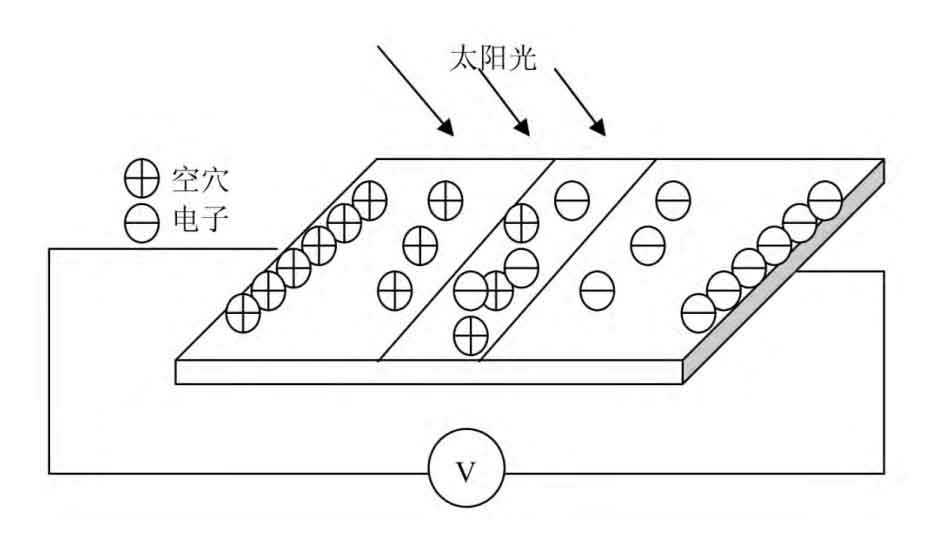
Due to the irradiation of light in semiconductor materials, electron hole pairs are generated, and under the action of an internal electric field, electrons and holes move towards the N and P regions, respectively. Voltage is present externally, which is known as the photovoltaic effect. As shown in Figure 1, when a wire is connected to a load, a current passes through
1.2 Technical parameters of photovoltaic cells
The main technical parameters of solar photovoltaic cells include: open circuit voltage, short circuit current, maximum output power, maximum output working voltage, maximum output working current, etc
| Serial number | Specification and model | Peak power/Wp | Peak voltage/V | Peak current/A | Open circuit voltage/V | Short circuit current/A | Weight/kg | Thickness/mm | NOCT ℃ | Maximum system voltage V | Resistance to wind or surface pressure |
| 1 | P295×150 | 3 | 16.5 | 0.18 | 21.0 | 0.2 | 0.6 | 25 | 46±2 | 1000 | 2400Pa 1130Km/h |
| 2 | P187×350 | 5 | 17 | 0.30 | 21.0 | 0.33 | 1.0 | 25 | 46±2 | 1000 | 2400Pa 1130Km/h |
| 3 | P230×350 | 8 | 17.5 | 0.45 | 21.0 | 0.5 | 1.2 | 25 | 46±2 | 1000 | 2400Pa 1130Km/h |
| 4 | P285×350 | 10 | 17.5 | 0.57 | 21.0 | 0.66 | 1.2 | 25 | 46±2 | 1000 | 2400Pa 1130Km/h |
| 5 | P430×300 | 12 | 17.5 | 0.79 | 21.0 | 0.85 | 2.3 | 25 | 46±2 | 1000 | 2400Pa 1130Km/h |
| 6 | P400×350 | 15 | 17.5 | 0.86 | 21.0 | 1.0 | 2.3 | 25 | 46±2 | 1000 | 2400Pa 1130Km/h |
| 7 | P525×350 | 20 | 17.5 | 1.1 | 21.0 | 1.3 | 2.5 | 25 | 46±2 | 1000 | 2400Pa 1130Km/h |
| 8 | P541×422 | 25 | 17.5 | 1.4 | 21.0 | 1.6 | 2.9 | 25 | 46±2 | 1000 | 2400Pa 1130Km/h |
| 9 | P535×510 | 30 | 17.5 | 1.7 | 21.0 | 2.0 | 4.1 | 25 | 46±2 | 1000 | 2400Pa 1130Km/h |
| 10 | P660×490 | 35 | 17.5 | 2.0 | 21.0 | 2.3 | 4.5 | 25 | 46±2 | 1000 | 2400Pa 1130Km/h |
| 11 | P660×540 | 40 | 17.5 | 2.3 | 21.0 | 2.6 | 5.6 | 25 | 46±2 | 1000 | 2400Pa 1130Km/h |
| 12 | P660×540 | 45 | 17.5 | 2.57 | 21.0 | 2.9 | 5.6 | 25 | 46±2 | 1000 | 2400Pa 1130Km/h |
| 13 | P660×630 | 50 | 17.5 | 2.9 | 21.0 | 3.1 | 5.8 | 25 | 46±2 | 1000 | 2400Pa 1130Km/h |
The specification parameters of a certain company’s solar cell module are shown in Table 2
2. Topological structure of photovoltaic grid connected system
Photovoltaic grid connected power generation system refers to a system that converts the direct current output from a photovoltaic array into alternating current of the same amplitude, frequency, and phase as the grid voltage, and integrates it into the grid. Photovoltaic grid connected power generation is one of the main application forms of photovoltaic power generation. Photovoltaic grid connected power generation system usually consists of three parts: photovoltaic power generation array, grid connected inverter, and grid, as shown in Figure 2
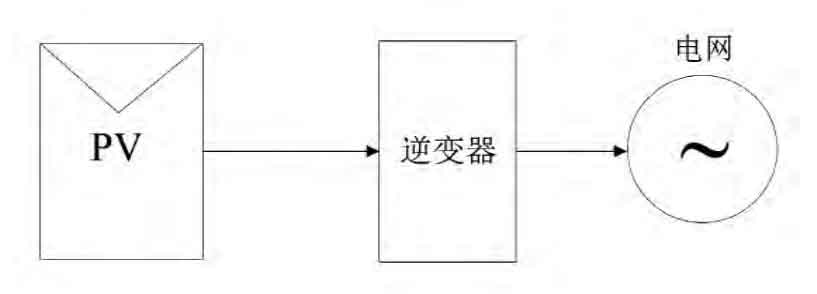
2.1 Architecture of photovoltaic arrays
According to different power levels and the connection methods between photovoltaic arrays and inverters, the architecture of photovoltaic grid connected power generation systems can be divided into six types: centralized structure, AC modular structure, string structure, multi branch structure, master-slave structure, and DC modular structure.
1) Centralized structure
Centralized structure refers to the series and parallel connection of photovoltaic modules to form a power generation system, which converts solar energy into direct current energy and then converts direct current into alternating current through a grid connected inverter. The centralized structure is suitable for high-power power generation systems. Its advantage is that only one grid connected inverter is used, The structure is simple and the inverter efficiency is high. The disadvantage is that blocking and bypass diodes increase system losses; At an ambient temperature of 12 degrees Celsius, the temperature of components that work normally is 22 degrees Celsius, while the temperature of components affected by shadows can reach 70 degrees Celsius. This not only reduces the output power of the system, but also shortens the lifespan of the components; The characteristic curve of photovoltaic arrays has complex multiple peaks; Due to the high voltage, it is necessary to have a high voltage level and high cost of the DC bus, making it difficult to ensure safety; The system is not conducive to expansion. The centralized structure is shown in Figure 3

2) AC modular structure
The AC modular structure is shown in Figure 4. Its characteristic is that each photovoltaic module is integrated with the inverter separately as a module of the photovoltaic power generation system, which is separately integrated into the power grid
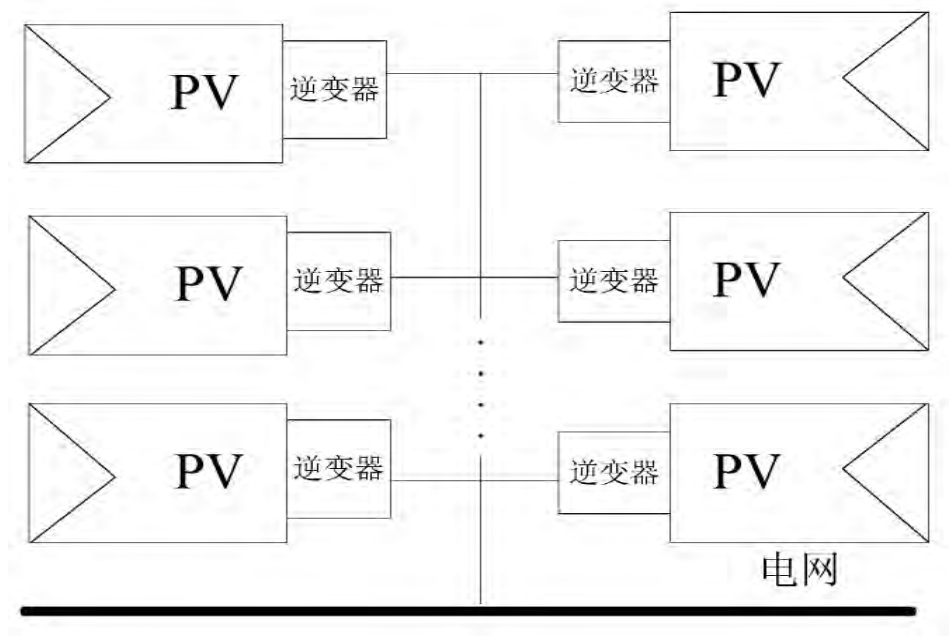
The advantages of an AC modular structure are: no heat spots and shadow problems; Due to the absence of blocking and bypass diodes, the loss of photovoltaic modules is reduced; Each independent power generation grid connection module has its own MPPT, greatly improving power generation efficiency; The expansion of the system has great flexibility; The safety has been improved. The disadvantage is that multiple small capacity inverters are used, resulting in low conversion efficiency. The power level of the AC modular structure is generally between 50 and 400W
3) String structure
The string structure combines the characteristics of the first two structures and is suitable for power levels of several thousand watts. The string structure is shown in Figure 5
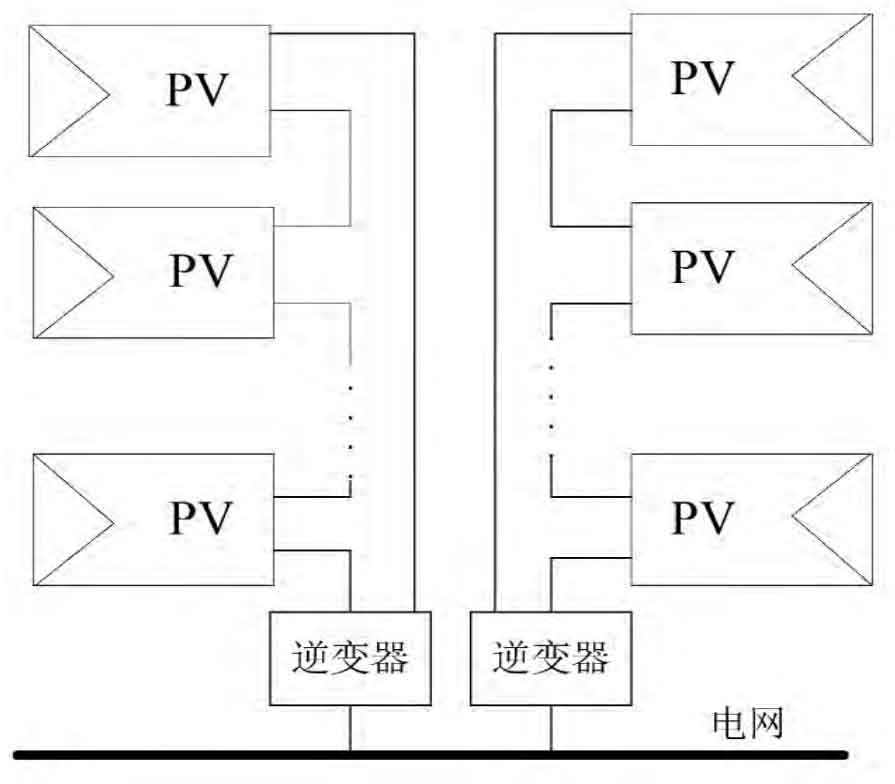
In the string structure shown in the figure, several photovoltaic modules are connected in series to the grid connected inverter, without a centralized DC bus in the structure phase, thus improving safety. Generally, a string photovoltaic module has an output power of several kilowatts, and after expanding with multiple string structures, high power output can be obtained. Due to the use of an MPPT circuit in a series structure, So the utilization rate of photovoltaic modules has been improved. However, it cannot be guaranteed that all photovoltaic modules are at their maximum power point, and there are still problems of series power mismatch and multiple peaks in series
4) Multi branch structure
The multi branch structure is shown in Figure 6. It can be divided into two forms: series and parallel. Each branch has a DC/DC converter, and multiple branches share the same inverter. This structure has low unit cost, strong flexibility, and high efficiency in the grid connected system. Once a converter fails in the system, it does not affect the entire system operation. This structure is suitable for the application of integrated photovoltaic building systems. Among the two structures, Parallel multi branch structures are widely used
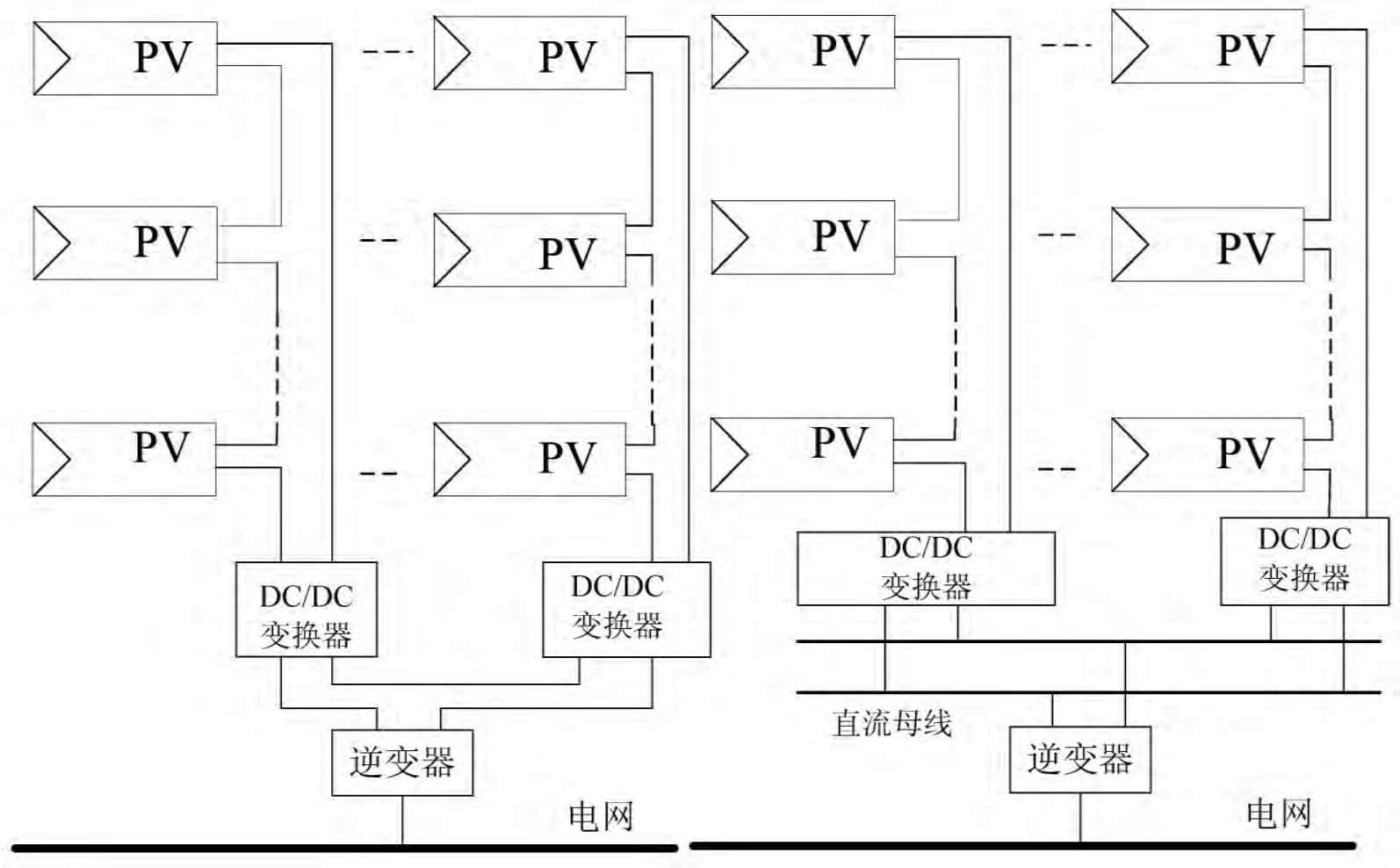
5) Master-slave structure
The master-slave structure is shown in Figure 7. Its biggest feature is that according to different external environments, the controller controls a set of collaborative switches to connect the photovoltaic modules and corresponding inverters, enabling the entire system to achieve optimal utilization efficiency. This structure is a new type of system structure that has developed in recent years and is also the main development trend in the future
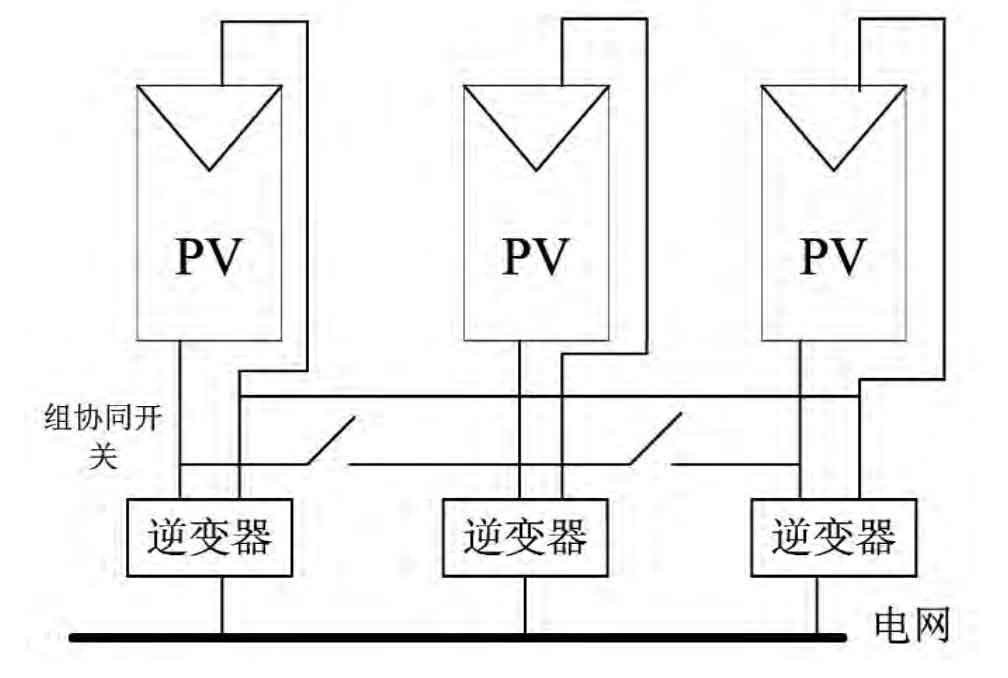
When the external environment changes, such as low illumination, the output power of the photovoltaic module is low. At this time, the controller control group collaboration switch only connects one grid connected inverter, and the system becomes a centralized structure, thereby improving the working efficiency of the inverter. As the illumination increases, the controller control group collaboration switch adjusts the connection of the inverter reasonably, and the system becomes a series structure, which can achieve the best inverter efficiency. Therefore, This structure changes the composition structure of the system in a timely manner according to changes in the external environment, allowing the advantages of various structures to be fully utilized. Additionally, due to each string having its own MPPT circuit, the entire system can achieve maximum utilization efficiency output
6) DC modular structure
The DC modular structure consists of a photovoltaic DC building module and a centralized inverter module, as shown in Figure 8. The photovoltaic DC building module integrates photovoltaic modules, high gain DC/DC converters, and surface building materials through reasonable design, forming an independent and capable photovoltaic power generation system Plug and play surface building components. The main feature of the centralized inverter module is that each photovoltaic DC building module transmits the converted DC power to the DC bus. The centralized inverter module converts the DC power on the DC bus into current and then integrates it into the power grid. At the same time, it also needs to ensure that the DC bus voltage is constant, so that each DC building module can work normally
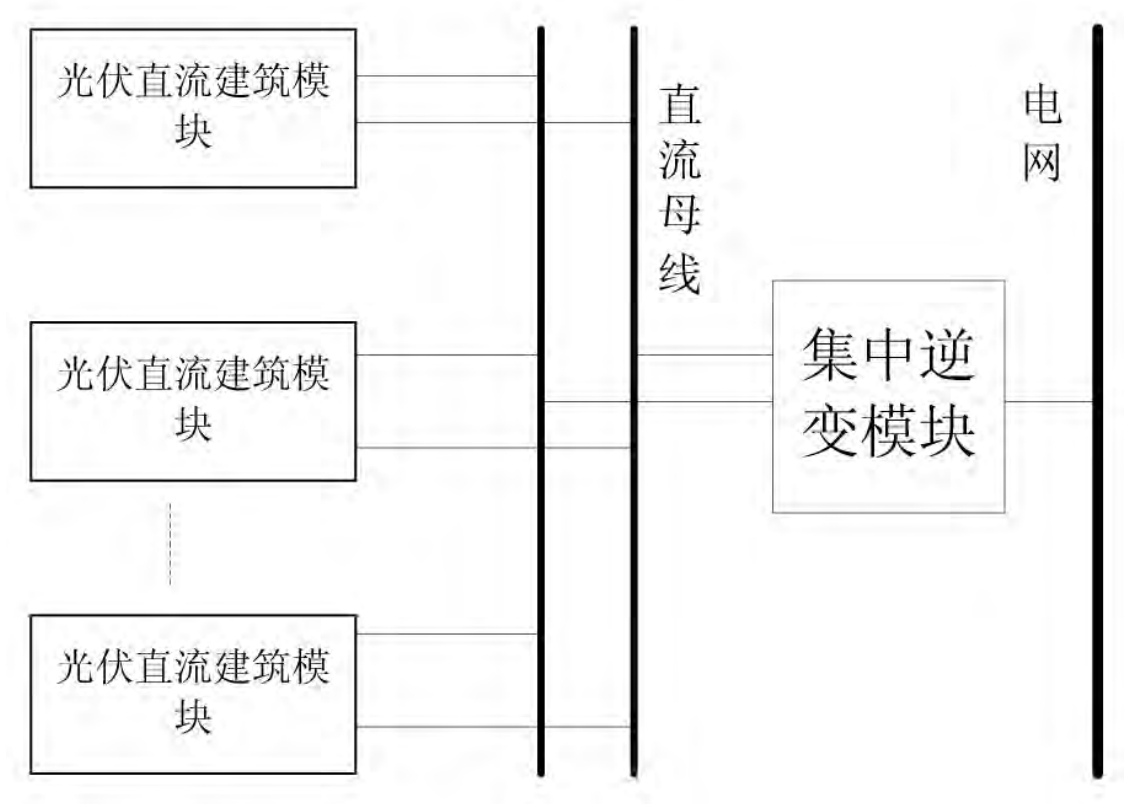
2.2 Isolation type photovoltaic grid connected system
The isolated photovoltaic grid connected system refers to the system in which the inverter converts direct current into alternating current and connects it to the grid through a transformer. The system in which the transformer operates at power frequency is called the power frequency isolated grid connected system, and the system in which the transformer operates at high frequency is called the high-frequency isolated grid connected system
1) Power frequency isolation type
The power frequency isolation type system is shown in Figure 9. The photovoltaic modules in the figure convert solar energy into direct current, which is then converted into alternating current through an inverter, and finally connected to the grid through a power frequency transformer. Here, the power frequency transformer plays the role of isolation and voltage matching
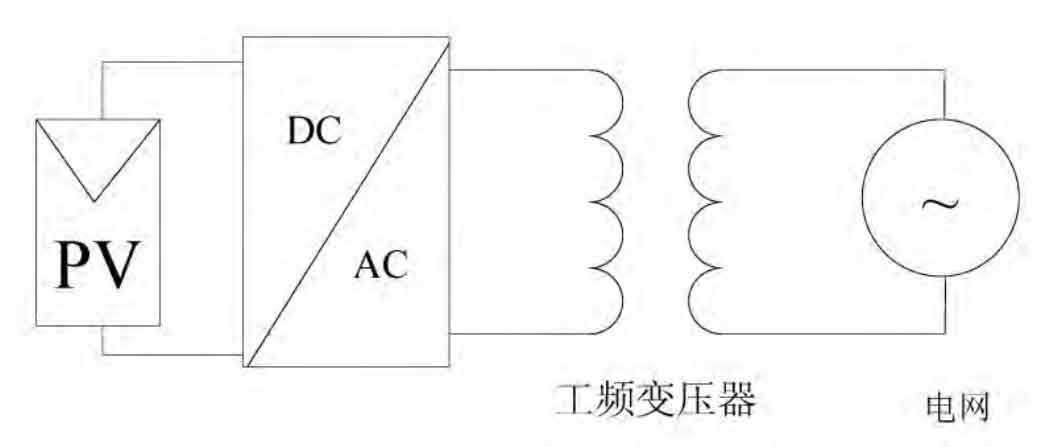
The advantage of this system is that due to the presence of transformers, the safety of the system is improved, which can effectively prevent harm to people when people touch the DC side electrodes. In addition, transformer isolation prevents direct current from being injected into the power grid. The disadvantage is that the power frequency transformer is bulky, heavy in weight, and large in volume, thus increasing the loss and cost of the system.
2) High frequency isolated photovoltaic grid connected system
Compared to the power frequency isolation grid connected system, the transformer of the high-frequency isolation grid connected system operates in a high-frequency state, with small size, light weight, and low losses. With the development of technology, the efficiency of this system is also greatly improved
2.3 Non isolated photovoltaic grid connected system
Non isolated photovoltaic grid connected system refers to the direct grid connection of the inverter after converting direct current to alternating current. Compared with the isolated grid connected system, there is no transformer energy loss. Therefore, the non isolated photovoltaic grid connected inverter structure has higher efficiency, simpler system structure, lighter weight, and lower cost
Non isolated grid connected systems are divided into two types: single stage and multi-level
1) Single stage non isolated photovoltaic grid connected system
In a single stage, single stage, non isolated photovoltaic grid connected inverter system, the inverter converts the direct current converted by the photovoltaic array into alternating current and directly integrates it into the power grid. At this time, the inverter operates at power frequency. In addition, due to the direct grid connection of the inverter, a higher voltage level is required on the DC side. Therefore, the entire system also requires a higher insulation level, as shown in Figure 10
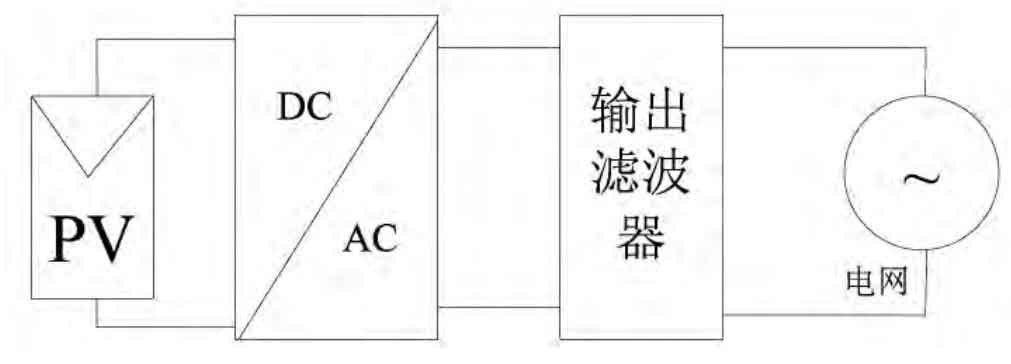
2) Multistage non isolated photovoltaic grid connected inverter
The multi-level non isolated photovoltaic grid connected inverter system is shown in Figure 11. The inverter process from DC to AC consists of multi-level converters. Due to the use of high-frequency conversion technology in the inverter process, it is called a high-frequency non isolated grid connected system

In non isolated photovoltaic grid connected systems, there are some issues that cannot be ignored due to the lack of any isolation between the photovoltaic array and the public power grid. For example, there may be a large distributed capacitance between a large area of solar cells and the ground, which can lead to the existence of common mode leakage current; Without isolation measures, the system is easy to inject DC into the power grid. The advantages of this system are small size, light weight, high efficiency, and low cost, making it widely applicable. For existing problems, as long as certain measures are taken, the safety of circuit operation can be guaranteed.
3. Design principles for the topology structure of photovoltaic grid connected power generation circuits
From the above, it can be seen that photovoltaic grid connected power generation systems have various structures. In application, appropriate grid connected structures need to be selected or designed according to different situations. The key indicators for designing grid connected structures are: efficient operation, high reliability, long service life, easy maintenance, power quality, low noise, small size, and electrical isolation. The main design principles are as follows:
1) Efficiency
The main technical indicator of photovoltaic grid connected systems is efficiency. Therefore, when designing, the primary consideration is the conversion efficiency of the system. The fewer circuit components, the smaller the loss, and the fewer stages of the circuit, the smaller the loss. In high-frequency circuits, to reduce losses, MOSFETs should be selected as the inverter components as much as possible, because the loss of MOSFETs is smaller than that of IGBTs under the same conditions
2) Cost
To ensure the maximization of profits and cost savings in the power generation system, devices with strong universality and purchased ones should be selected, making maintenance easy and cost-effective. To reduce costs, while meeting system requirements, power devices should be selected with low voltage and overcurrent levels as much as possible
3) Power quality
To improve the power quality of grid connection, filters are the most crucial step in improving power quality. To reduce system noise, frequency doubling technology or increasing switching frequency can be used. When designing filters, multi-level technology can be used, mostly LCL filters. In hardware circuits, advanced technologies such as phase-locked loop technology and current control technology can be used to improve dynamic performance
4) Principles for selecting circuit topology
When selecting circuit topology, efficiency is the first principle. Non isolated types have higher efficiency than isolated types; The power frequency isolation type has higher efficiency than the high-frequency isolation type; The high-frequency isolation type has the lowest efficiency. When selecting, the appropriate topology structure should be selected based on whether there are specific isolation requirements, volume and size requirements
5) High reliability, long service life, and easy maintenance
To extend the service life of photovoltaic power generation systems, long-life capacitors such as electrolytic capacitors or mailing thin film capacitors should be selected in the circuit. To improve the reliability of the system, the integration level of the system should be maximized. In addition, modular design with high integration level not only facilitates installation and maintenance, but also improves system redundancy
4. Summary
Analyzed the distribution and power level of photovoltaic arrays, designed various circuit topologies to improve the efficiency of the entire power generation system. Detailed discussions were made on the advantages and disadvantages, power levels, and applicable occasions of various topologies, providing valuable reference for engineering practice. In specific engineering practice, comprehensive consideration should be given based on grid connection requirements and design principles, Only then can we design a photovoltaic grid connected topology with the best overall performance
